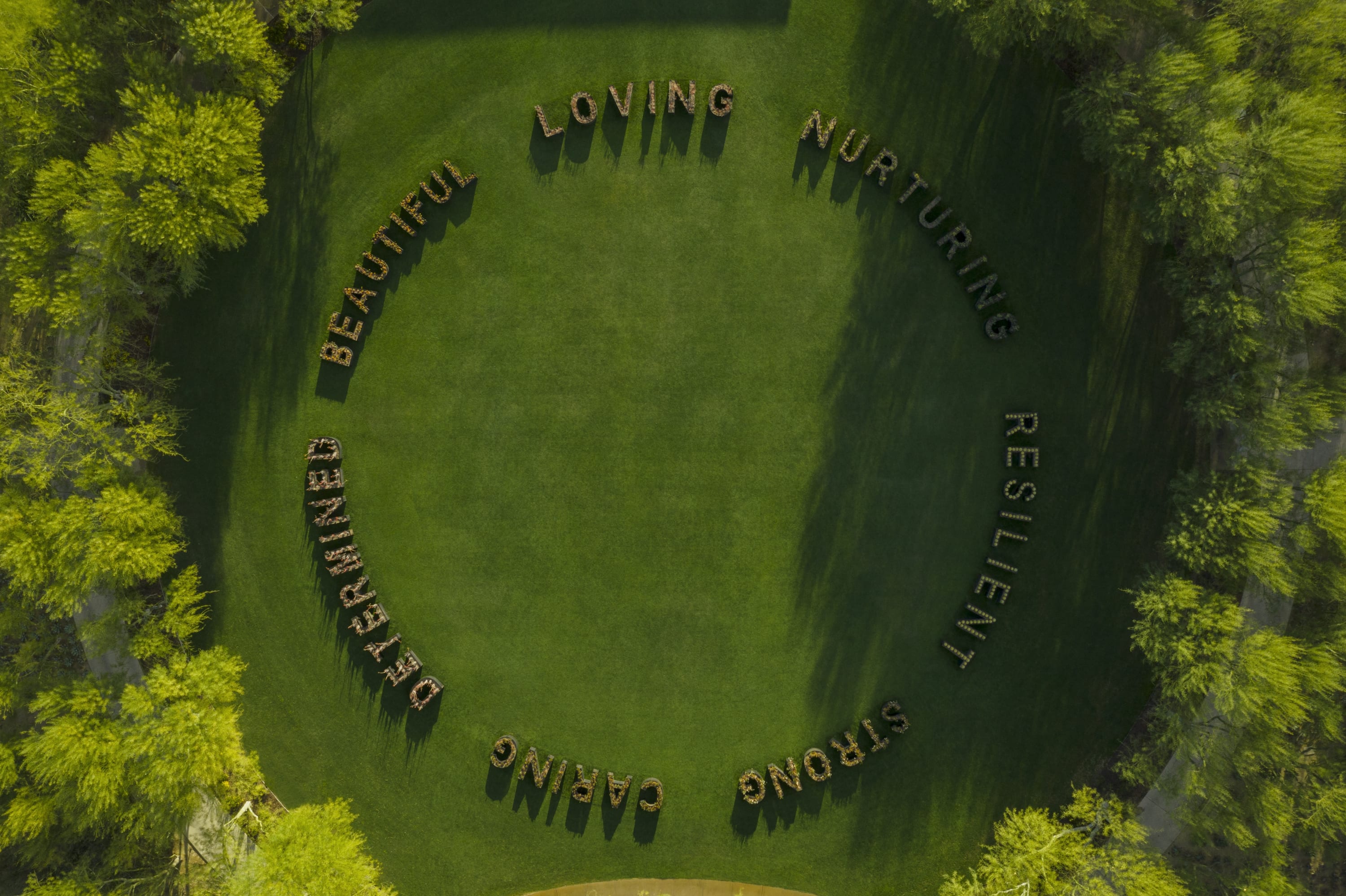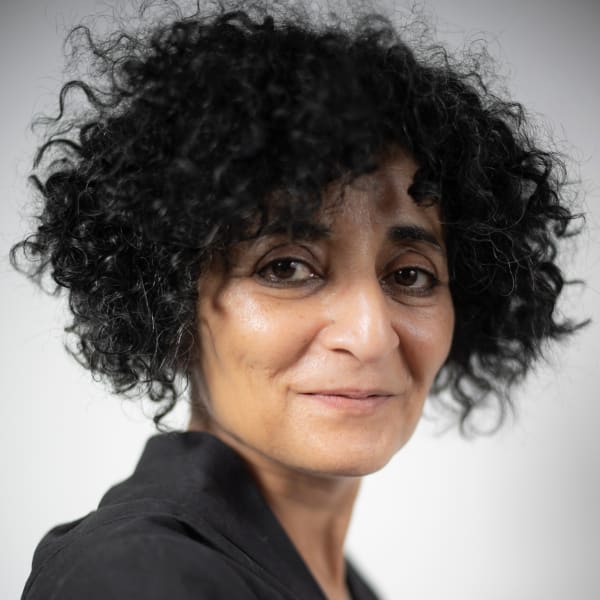-
For sales inquiries, please contact:
-

-
Since 1997, Ghada Amer has widened her artistic practice by creating gardens in outdoor, public spaces. She has conceived, drawn, and built gardens in a range of locations across several continents.
Redefining the Genre of Garden Installations:
Ghada Amer’s production innovates the very genre of artistic gardens, redefining architecture, landscape art, street art, and vegetal graffiti (as with Jérôme Le Réty or Catherine Mosbach for instance). Her gardens change the genre into a hybrid model where art, public space, and spectators merge and are transformed through a dynamic encounter.
A Transformative Stroll:
Walking through Ghada Amer’s gardens alters our relationship to public space. We no longer walk through a space but we inhabit it. These are no longer public spaces, but artistic ones. They are not anonymous sites, but places of reflection, of meditation. To quote Kurt Vonnegut’s observation on meditation: “Like life, gardens are not a road. We enter and exit them through the same gate, wandering. Where we go matters less than what we notice.” We enter Ghada Amer’s gardens through the same door, exiting from the same place we entered. Her gardens do not lead to a particular endplace. There is no specific goal when we stroll through them. Wandering, noticing anything along the way is the very objective of walking though Ghada Amer’s gardens. And this wandering is transformative. It encourages us to redefine our relationship to art and offers us new definitions and experiences of beauty.
A New Medium:
Even though Ghada Amer was at first reluctant to create gardens, being intrigued at how she could bring her signature embroidered paintings to the outdoors, she quickly realized that gardens could offer an alternate way to experiment and express some of the concepts present in her painting. With Ghada Amer, outdoor public gardens, like painting, are domesticated through the introduction of a feminine occupation, gardening. In this way, planting flowers can be considered an activity equivalent to her signature embroidery, one that transforms public spaces and museum grounds into gigantic artistic installations and decidedly female garden art productions. Not surprisingly, gardens have become today an integral part of Ghada Amer’s portfolio and central to her development as an artist.
Aesthetics Meet Politics and Gender:
As always, aesthetic considerations are at the core of Ghada Amer’s garden practice. And as always, her gardens raise important social and political questions equally ubiquitous throughout her wider artistic work (paintings, drawings, ceramics, and sculptures). Key themes explored in her gardens revolve around the status of women in society, identity, gender roles, and political or ideological propaganda. As Ghada Amer writes, “Aesthetics alone is not enough. And a message alone is just propaganda.”
All of Ghada Amer’s gardens are ephemeral, except one. To date, Happily Ever After in Ornellia
(Tuscany, Italy, 2009) is Ghada Amer’s only site specific, permanent garden.
- Sahar Amer
-

-
-

-
-

-
-

-
-

-
-
Featured Artist
Ghada Amer | Gardens
Current viewing_room








